- Document History
- Subscribe to RSS Feed
- Mark as New
- Mark as Read
- Bookmark
- Subscribe
- Printer Friendly Page
- Report to a Moderator
- Subscribe to RSS Feed
- Mark as New
- Mark as Read
- Bookmark
- Subscribe
- Printer Friendly Page
- Report to a Moderator
Contact Information
Competition Year: 2016
University: University of Sheffield
Team Members (with year of graduation): Marius Umbrasas
Faculty Advisers: Dr Sean Anderson
Email Address: marius.umbrasas@gmail.com
Country: UK
Project Information
Title:
Surface Electromyography Signal Classification for Controlling a Prosthetic Hand
Description:
The prosthetic hand prototype is used to identify and mimic hand gestures performed by the user through classifying surface electromyography signals (EMG). By totaling just under £300 in build costs - the system rivals many prosthetic hands currently available on the market by utilizing a relatively low-cost EMG sensor - the Myo armband and a 3D printed design. Such a project forms the basis for designing a fully functional, affordable, life-like and intuitively controlled prosthetic hand.
Products:
Software
NI LabVIEW 2014
Matlab 2015a
NI-VISA
LabVIEW Interface for Arduino 2.2.0.79
Arduino IDE 1.0.5-r2 or higher
Myo Connect
Hardware
PC/laptop
Myo Armband
Arduino Uno
HS-485HB servo x5
Custom Interface circuit
3D printed prosthetic hand
PSU to supply 4.5-6V up to 2A
The Challenge:
Non-invasive EMG measurements, such as, surface EMG are prefered for daily use in prosthetic hand control due to low health risks. However this means that the readings are noisy and difficult to work with as they are measured further from the actual muscle separated by a thick layer of tissue. Therefore, high grade medical electrodes are typically used to obtain good EMG classification performance - making resulting prosthetics highly expensive, indicating a need to explore the effectiveness of low-cost sensors. Furthermore, current EMG classification solutions cannot fully utilize the advanced robotic hands available on the market, as researchers do not agree on best classification methods and parameters to be used. Therefore work needs to be done on a publicly available data set to allow for result comparison. Finally, prosthetic hand control needs to be done under tight time constraints as a large delay would potentially increase the rejection rate for any prosthetic hand - meaning that decisions have to be made on a small number of data samples.
The Solution:
Video 1 Project video
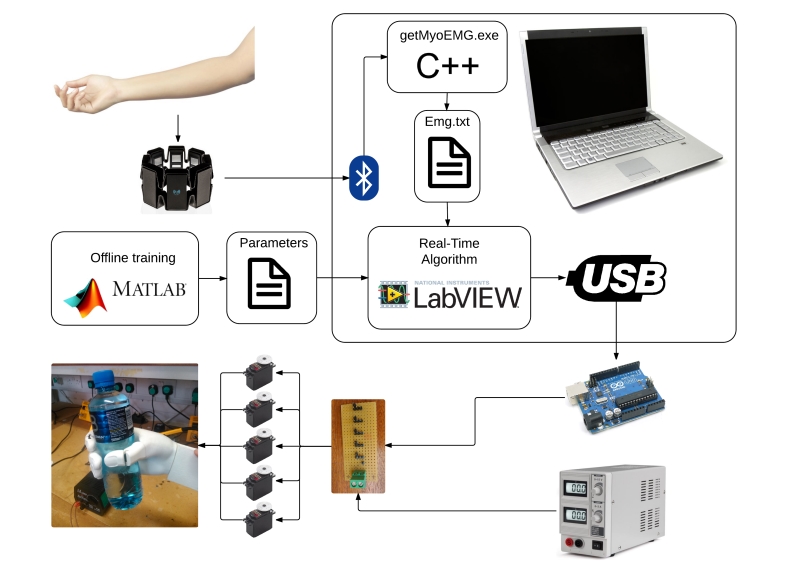
Figure 1 Prosthetic hand prototype system overview
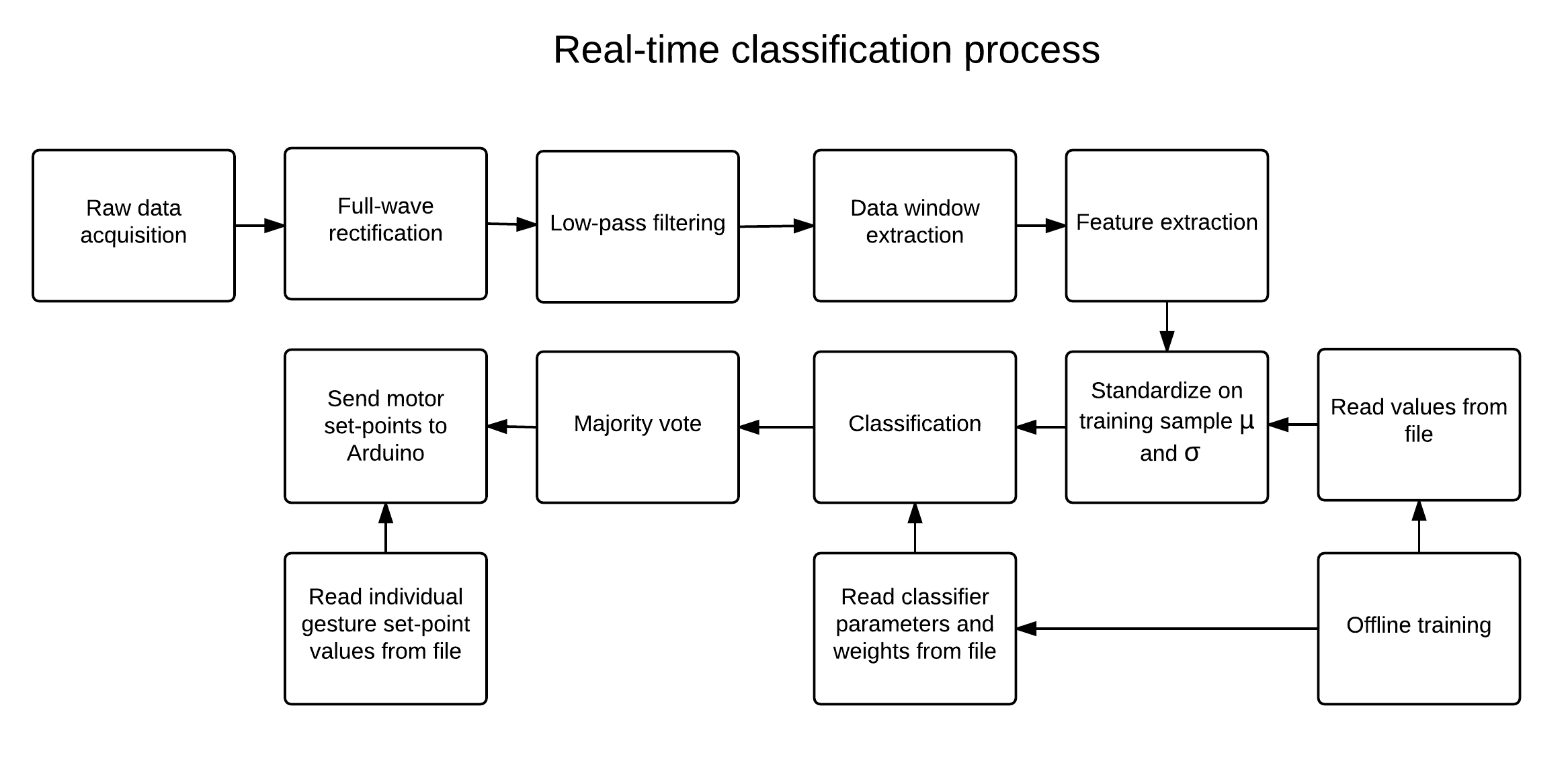
Figure 2 EMG classification algorithm diagram
The final project deliverable was a prosthetic hand prototype system (see Figure 1 and Video 1) that can classify 4 gestures with an accuracy of 89.5% while displaying a reaction time of 125ms (lower than the 300ms limit specified in literature). The prototype was mostly 3D printed by mixing open source designs and using SolidWorks to design the final motor holder. Servos were used to actuate the fingers in combination with a custom interface board to provide power from the PSU unit and PWM signals from an Arduino Uno. LabVIEW was used to implement the classification algorithm and to control the Arduino while running on a laptop (see Figure 2) - utilizing more computational power than an Arduino can provide. The algorithm was based on previous work done in MATLAB on a public EMG signal database. The same MATLAB scripts were re-worked to train the final EMG classifier and then pass the resulting parameters to LabVIEW (see Figure 3). Finally, to acquire EMG signals in a non-invasive manner - the Myo armband was used as an affordable sensor that demonstrated increased accuracy over expensive medical grade sensors used in the creation of the public database.
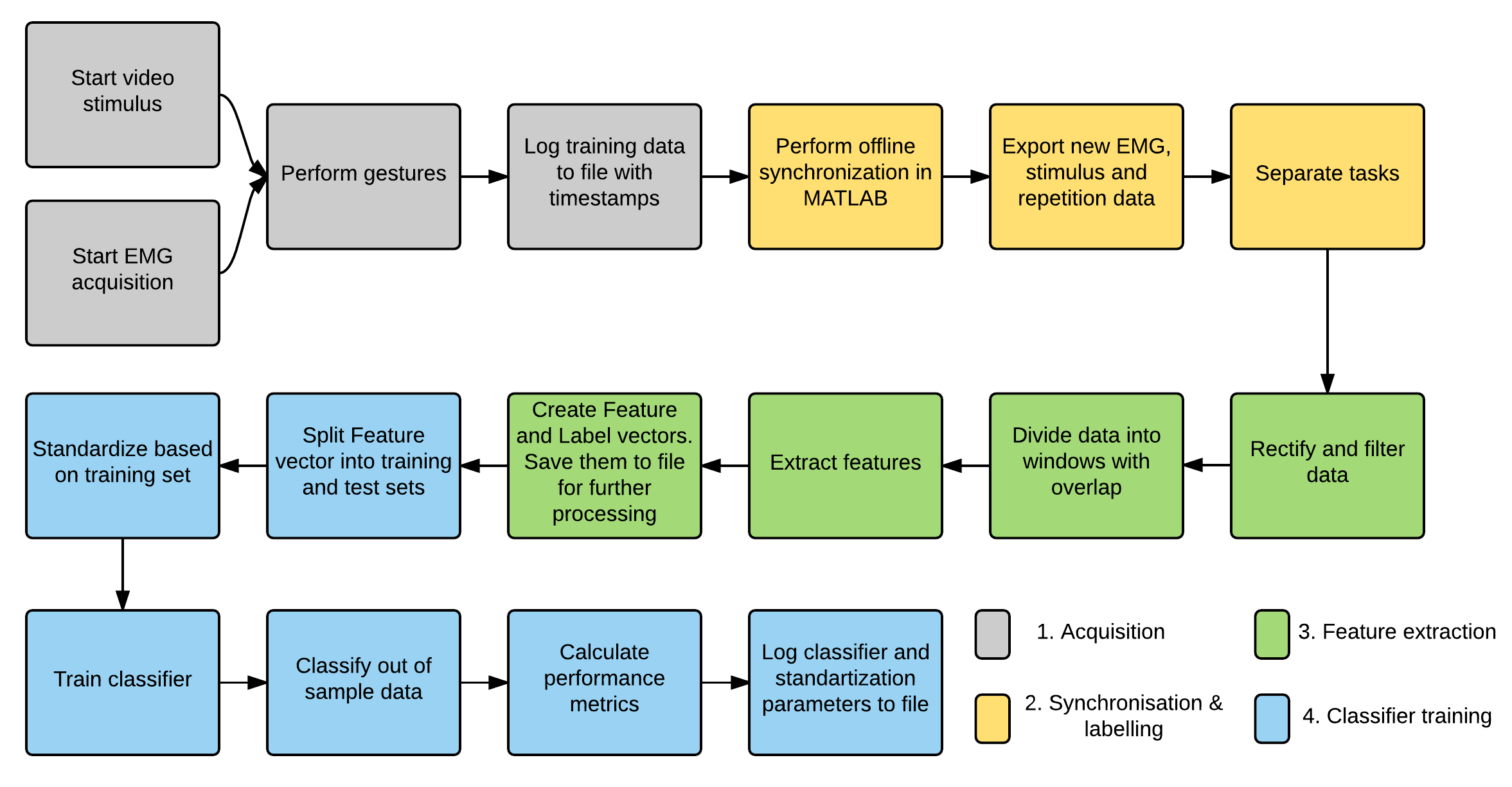
Figure 3 Training process
Why LabVIEW?
The use of LabVIEW allowed to develop the final algorithm (see Figure 4) in a span of 2 weeks due to taking advantage of the graphical programming approach that allowed for straightforward code module testing and debugging. Furthermore, the LabVIEW Interface for Arduino toolkit allowed to convert the Arduino Uno into a serial interface and to get servo control working in a matter of minutes.
In addition, LabVIEW made it simple to parallelise processes in the algorithm and displayed the least amount of latency for reading data from the Myo armband when compared to other methods explored. This resulted in system performance metrics that were well below the specified limits. Finally, the code used can be easily adapted to be used with a myRIO - further improving performance system performance.
Figure 4 Block diagram of the Main VI
Future work:
The overall system took 3 weeks to build and test, while the design and familiarization with EMG classification took a about 5 months. Having done this pre-work - the number of gestures to classify can be easily increased while retaining most of the classification accuracy. This would allow the prototype to get closer to the functionality required by prosthetics users. However, the system needs to be made into a portable device with an on-board battery and an embedded controller, such as, the myRIO for it to become finalized.
Additional improvements have to involve increasing surface friction and range of motion for the prosthetic hand in order to increase functionality and the gestures that can be carried out.
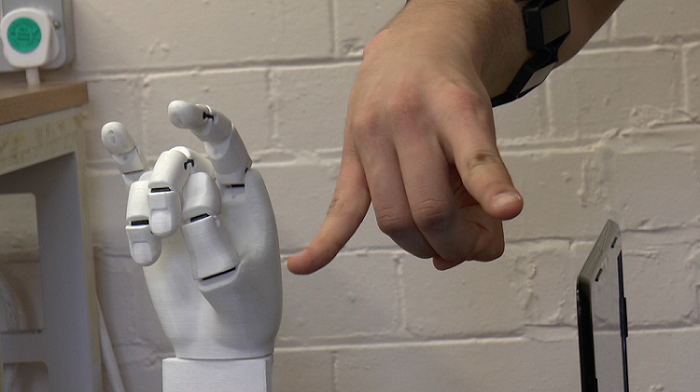
Figure 5 Prosthetic hand prototype system repeating a hand gesture
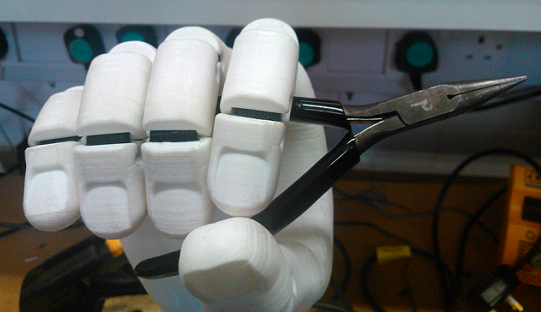
Figure 6 Prosthetic hand prototype holding pliers
Nominate Your Professor
I would like to nominate Dr Bryn Jones for providing a truly hands on experience in modelling and controlling a take-home twin rotor system in his Rapid Control Prototyping module (Twin Rotor kit case study). By using a myDAQ and some custom circuitry he created one of the most hands on and interesting modules in the ACSE department that gives students a very good introduction to LabVIEW and reinforces understanding of control concepts.
